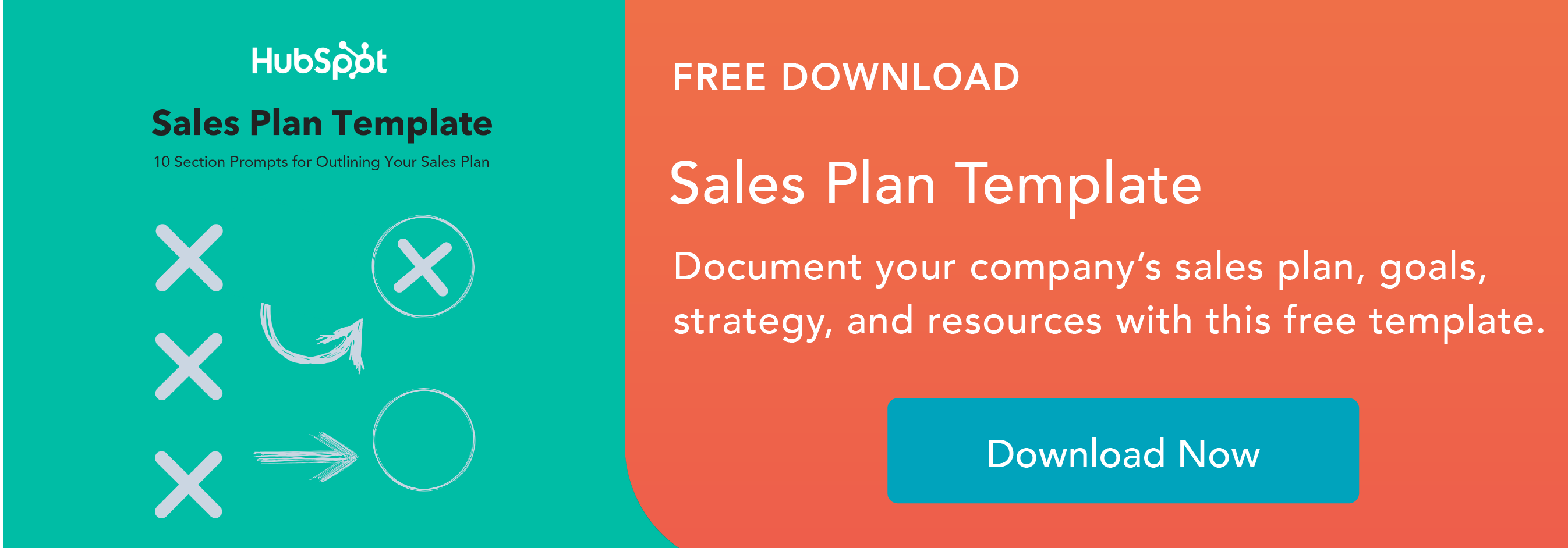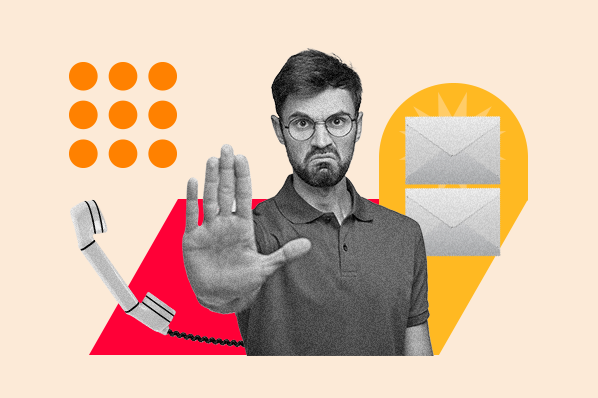"Always Be Closing" is a phrase Alec Baldwin's character, Blake, uses in the movie Glengarry Glen Ross. Blake is the epitome of the high-powered, low-empathy, money-driven salesperson and gets what he wants through fear, intimidation, and profanity-laced speeches.

After threatening and terrorizing a group of salesmen ("No women allowed in this boiler room!"), Blake gets to his point – salespeople should "ABC": Always Be Closing.
Here, we'll discuss exactly what ABC means, how effective it is, and explore a more modern alternative.
Table of Contents
Is Always Be Closing effective?
Why You Should Always Be Helping
How to Always Be Helping: 5 Strategies
Always Be Closing
Always Be Closing is a common motivational phrase that encourages salespeople to be persistent and focus the bulk of their energy on seeking out new customers and closing deals.
Although closing deals was a major focus for salespeople long before the release of this film, "Always Be Closing" was a catchy hook reps could hold onto. It required persistence, determination, and a willingness to use whatever tactics necessary to close a deal.
But is it the best sales advice for modern reps? Not necessarily.
Is Always Be Closing effective?
This kind of selling may have worked in the 1980s when David Mamet penned the play the movie is based on, but fast-forward to today, and things are very different.
Today's buyers are less susceptible to gimmicks and empty claims. They independently seek out information about products or services without ever speaking to a sales rep.
The "Always Be Closing" school of thought ignores they buyer entirely and places the salesperson at the center of the sales process, taking a brute-force approach to closing deals. This approach will fall flat for modern buyers.
Research shows that customers are most motivated to make a purchase when they see a sales rep as a trusted adviser. What's more, 61% of buyers say they have a positive sales experience when the sales rep isn't pushy or aggressive.
That’s why taking an "Always Be Closing" approach today would likely scare off your customers before you get a chance to close the deal.
Always Be Closing Alternative
Blake would never give up control of the sales process to a prospect. Yet that’s exactly what a top salesperson today needs to do.
To effectively sell, modern salespeople need to follow a totally different mantra: Always Be Helping.
What is Always Be Helping?
Your job, of course, is still to sell. But abandon any strategies that involve force-feeding prospects a product they don’t want and don’t need. As Dale Carnegie famously said, people don't want to be sold to – they want to feel as if they're buying.
Instead, as your prospect moves through the funnel, create a customer-centric experience and provide resources and guidance as they attempt to solve a complicated business problem. Always Be Helping.
Why You Should Always Be Helping
Seller-focused selling doesn’t play anymore in either B2B or B2C sales processes. The balance of power has been tipped away from the sales rep and toward the buyer. With the transparency and availability of information online, and the ability to tap into third-party reviews, buyers are far savvier than they used to be.
High-pressure selling has stopped working because it treats customers as interchangeable piles of money. But that's not really true. Prospects' situations and needs are as diverse as the people themselves, and while one buyer might be successful with your product, your offering may actually hurt another.
So, while Always Be Helping is simply the right thing to do, it's also just better for your business. Selling to poor-fit customers is a stopgap solution that will cause customer turnover, lost income as clawback penalties, and in the most dramatic cases even shutter a business if churn gets too high.
On a less concrete scale, Always Be Closing tactics also hurt the brand. As soon as your company gains a reputation for having aggressive and selfish salespeople, it'll be much harder to gain customers in the future — even ones you actually could have helped.
This outline lists the five things all sales reps must do in the age of Always Be Helping.
How to Always Be Helping: 5 Strategies
1. Determine if the prospect has a problem you can solve.
If the prospect has a problem completely out of sync with what your company offers or doesn’t need any help for the foreseeable future, get out! They don’t want to talk to you; they don’t need to talk to you, and chances are you don’t want to talk to them.
Why?
Because you can’t help everybody, and you shouldn’t be. Working with bad leads is like throwing money down the toilet. Picking who to help is a significantly better use of your time.
Asking the right questions is a surefire way to gauge if a prospect has a problem you can help them solve, as you’ll clarify their pain points, understand where your offer fits in, also making it easier to create a value proposition when the time comes.
If you pick correctly, you’ll have no problem making 110% of your quota every month. But spending an equal amount of effort or time on every prospect – no matter how qualified or unqualified they may be – is a surefire way to continually miss the mark.
2. Understand where your prospect is in the decision making process.
The kinds of conversations you engage in with your prospects should vary significantly depending on what point they’re at in the buyer’s journey — whether they’re in the awareness, consideration, or decision stage.
- Awareness Stage: Your prospect knows they have a problem they want to solve but hasn't decided upon a solution or done vendor research. Only 19% of buyers want to connect with a salesperson during this stage, so marketers control lead nurturing. If you reach out to a prospect in this stage, use an extremely light touch or pass them back to marketing.
- Consideration Stage: Your prospect is aware of their problem and is committed to spending time and effort to develop a potential solution. Potential buyers will sniff around the edges of a resolution but won’t have defined how much of a material commitment they’re willing to make. The desire to speak to a salesperson increases to 60% during this stage, so it’s crucial to make contact.
- Decision Stage: Your prospect has thoroughly researched their problem and potential solutions. They might not have a specific vendor in mind yet, but if your company’s a big player, they’ve probably at least come across your resources. This is also the point where BANT (budget, authority, needs, and timeline) gets defined.
To determine where your leads are at in their journey, you can do things like track their interaction history with your business, like if they’ve opened a sales email or viewed your pricing page multiple times.
When you know where they stand, you can create a personalized sales process that speaks to their exact position. And, when you personalize, you’re championing Always Be Helping by prioritizing the customer and creating an experience based on their needs.
3. Engage with key decision-makers.
Once you’ve determined the prospect is a qualified lead and you know your product is the best fit, you want to engage with key stakeholders, like gatekeepers, influencers, or decision-makers.
If you find you begin the process not speaking to a final decision maker, you don’t need to be too worried. By engaging with all the appropriate people, you can verify your solution is the right one, and you can better understand the perspectives of those involved in each step of the process, from purchase to adoption.
In addition, the information you’ve gathered in your initial research and later conversations will help you prepare for conversations with the decision-maker so you can present a value proposition that is tailored, educational, and convincing.
4. Tailor your process to make it easy for the customer to buy.
Always Be Helping means giving up control of the buying process. It does not, however, mean that salespeople must let prospects drive the bus. Strike a balance between how your prospect wants the process to play out and using your expertise to guide them in the right direction.
Your value in the sales process is that you, unlike your prospect, have successfully sold this product many times before. They don't know how to get internal buy-in or structure a process that will get them the solution they need.
But you do.
Work with your prospect to understand their decision-making process and the perspectives of all relevant stakeholders, and then use that information to sell your product successfully.
5. Focus on educating.
Focus on educating your prospects on the viable solutions to the problem you have previously identified. By taking a consultative approach, you can cultivate meaningful relationships with your buyers by building trust, having genuine conversations, and making sure your prospect feels heard throughout the process.
Once you have built a solid foundation of trust with your buyers, you are in a stronger position to educate them on the viable solutions to their problem (likely your product) meaningfully.
To ensure you’re always educating, prioritize sharing content that speaks to each of the unique stages that a buyer may be in when you speak to them.
- When prospects are in the awareness stage, they’re looking for answers, so you can share educational Ebooks or videos that answer the questions they have.
- When prospects are in the consideration stage, they may do heavy research into your business to assess whether you’ll meet their needs. You can share case studies about other customers who have been successful in helping them visualize what could be to come if they do business with you.
- When prospects are in the purchase stage, they’re making a final decision. To help them decide, you can offer incentives like free trials or coupons.
Ultimately, the Always Be Helping salesperson has to establish trust and confidence before they can close the deal. Modern salespeople help their prospects connect the disparate dots to form a coherent solution. The era of the intimidating "always be closing" salesperson is officially over – and that’s a very good thing.
Editor's note: This post was originally published in July 2015 and has been updated for comprehensiveness and freshness.








.jpg)
![Why Your Company Should Invest in Inbound Sales During a Recession [Expert Insights]](https://blog.hubspot.com/hubfs/Recession inbound (1).jpg)

.jpg)